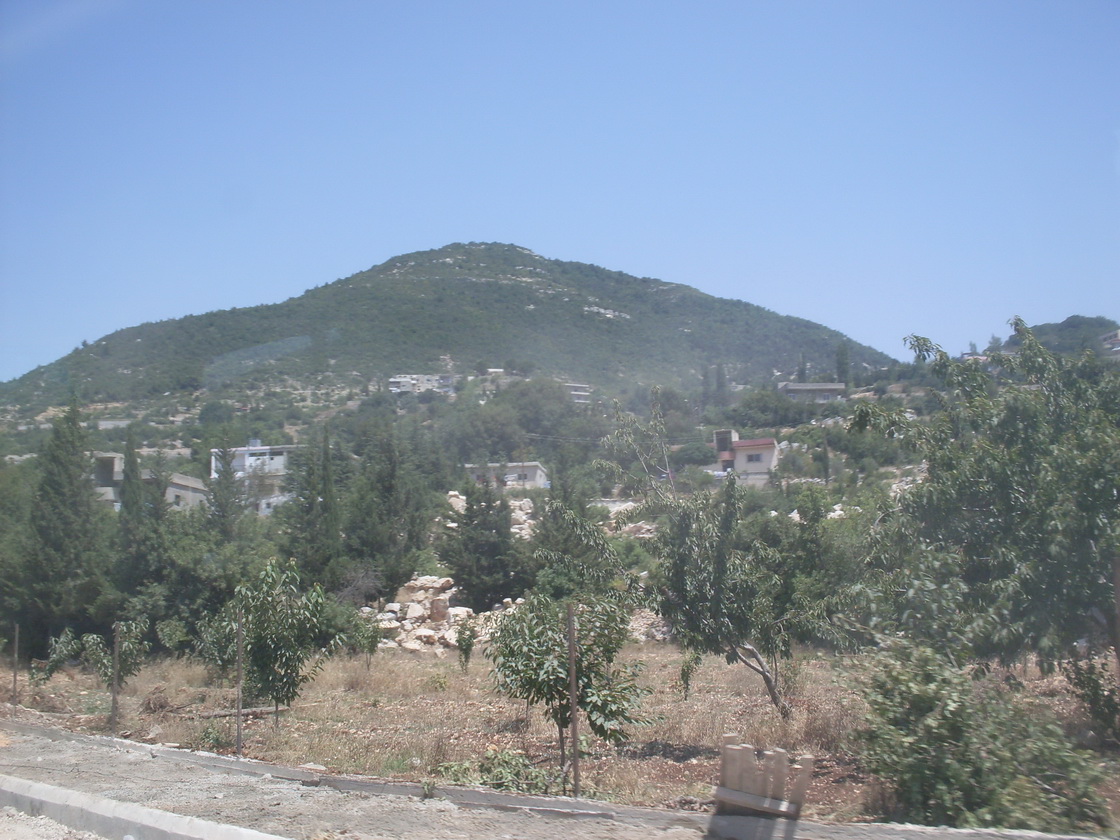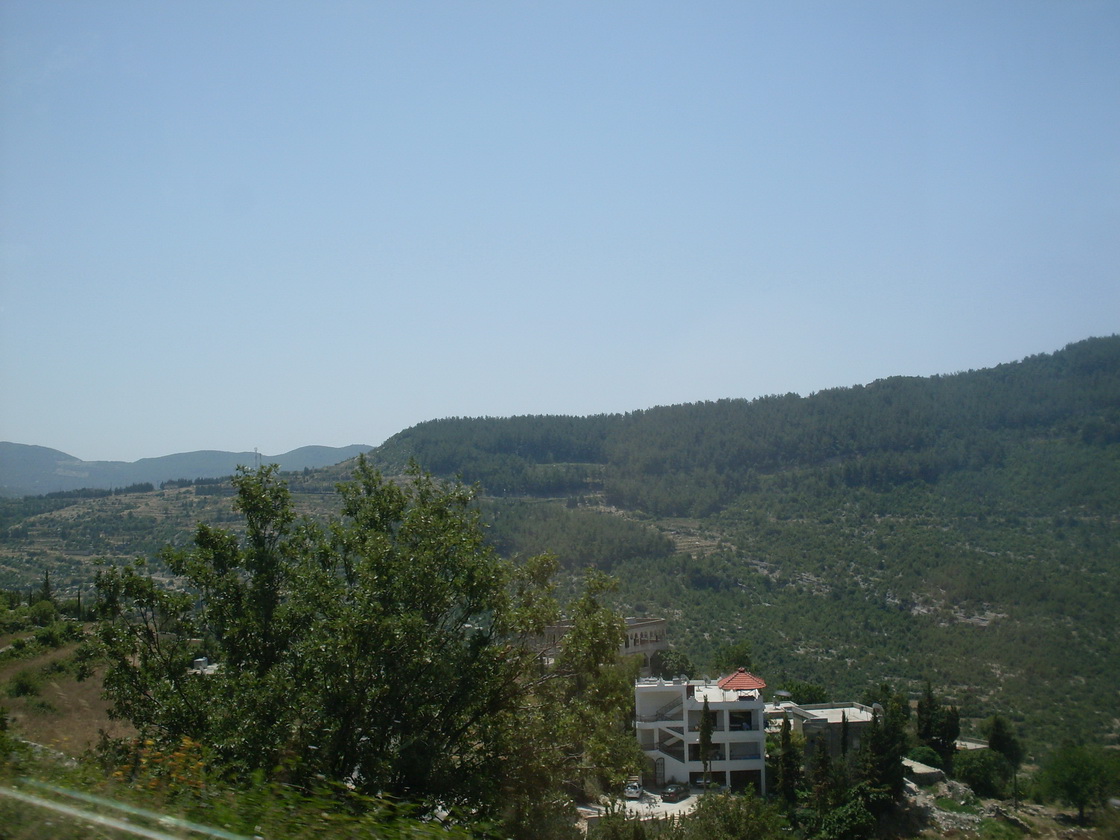For two months in a row, Rania and her family have been considering a return to Syria through border crossing near the predominantly Armenian Christian town of Kesab. But they keep getting cold feed.
"We just wanted to go back," Rania (26) told SyriaUntold in Turkey.
Officially, this small crossing connecting Syria’s northern Latakia province to the southern Turkey province of Hatay has been closed since 2015.
Fear that all hell could break loose once she is on the other side has kept Rania in Turkey. That fear is reinforced by the lack of traffic from Turkish border areas to Syrian regions controlled by the regime. Syrian refugees living in Turkey are hesitant to return to their home towns and villages in the region of Latakia.
Meanwhile, displaced Syrians who are living in this coastal region are under increasing pressure to return their hometowns in other parts of the country. This is particularly the case for natives of Aleppo since the regime considers the province "freed from terrorism."
Speaking to SyriaUntold in Turkey, Rania lays out her security concerns but says she believes that returning to Syria is the best course of action for her family. They can no longer afford the cost of living in Turkey, where consumer inflation reached a near 15-year high of 25.24 percent in October.
"When we heard of the Russian call to go back to our country, we thought that perhaps this was the silver lining that we had been waiting for," Rania told SyriaUntold. "Migration for us was a temporary decision. No one, be it the opposition, the government, or the Russians, paid attention to the displaced unless there was some sort of gain."
Russia has been nudging regional host countries — including Jordan, Lebanon and Turkey — to facilitate the return of Syrian refugees. This would allow Moscow to claim a return to "normalcy" in Syria. Moscow invested considerable resources in helping the Syrian regime retake most of the country from opposition forces over the past years.
Syrians living in Turkey are not heeding that call in high numbers.The Turkish side of the border was quiet near Kesab when SyriaUntold visited in July. Border patrol agents on both ends split their time between monitoring movements and drinking tea.
The crossing is a relic of 1939, the year when the sanjak [an administrative unit under the Ottoman empire] was annexed by Turkey. Back then, it witnessed the influx of thousands of Arabs who were fleeing Turkish forces.
Now the Turkish government is building a cement wall that is 10 meters high within territory considered part of modern day Syria. The wall aims to stop people from crossing through the difficult to patrol forested area. Surprisingly, Damascus has raised no objections.
The prospect of return raises serious security concerns for Rania. She has already experienced the brutality of the Syrian regime security forces first hand.
Rania left her hometown Al-Haffah, in the northwest of Latakia, in 2015. She fled to Turkey after having spent seven months in detention, along with her 9-year-old sister, for participating in a protest.
Military security forces detained the pair after identifying them on a video taken by an informant collaborating with the security apparatus. She was arrested the very same day and transferred with her sister to the government’s detention cent in Latakia.
Rania was then referred to the Political Security Directorate, one of the most feared security branches of Syria, and transferred to a civilian prison on "terrorism" charges.
"I was released from prison in exchange for others," she said."I later found out that they were members of Shiite militias who had been detained by one of the armed groups in Aleppo’s Al-Bab area."
Her sister was also released in the exchange and the siblings returned to Al-Haffah.
But the ordeal did not end there. Back in their hometown, they endured constant harassment. "Everyone took part in this," she recalled. "The security forces and people who kept giving me disturbing glances."
She left the town, heading first to opposition-controlled Idlib and then onto the southern Turkish province of Antakya, where her brother opened a carwash. The family lived off the business for two years until Turkish police showed up demanding they operate under a license.
Unable to afford one, they closed the carwash and sought out humanitarian aid to survive. Their economic situation became increasingly precarious. "We would wait for aid from one charity or another," said Rania.
When she approached the border crossing in the hope of getting to Kesab, Turkish border agents counselled her against making the move. It would be impossible to dodge Syrian security forces who have set up checkpoints all the way from the border to the town of Al-Haffah.
Some of the most feared Syrian security branches are active in the area: the Airforce Intelligence Directorate, Military Security Forces, the Political Security Directorate, and the Fourth Armored Division.
Rania reached out to police in Latakia in the hope of finding a solution but they were of little help and told her it was her "problem."
The young woman has also tried contacting the Khmeimim Air Base using the number published on their Facebook page and other platforms to ask them about the possibility of return. She has not received any answer yet.
Russia's plans exclude the Syrian coast
Russia began pushing the idea of Syrian refugee returns last July when the Ministry of Defense of the Russian Federation put forward a proposal to that effect. It was the first initiative of this kind since the start of the refugee crisis in 2011. The United Nations High Commissioner for Refugees estimate there are 6 million Syrian refugees.
Moscow transitioned from theory to practice quickly. Russian officials used every opportunity to try to whip up international support for the idea of large-scale returns by Syrian refugees. They also requested Syrian refugee records and numbers from 45 host countries. Eleven countries responded to that request.
But Europe has been weary of the Russian pursuit to link dealing with the refugee crisis to post-war reconstruction in the absence of a political roadmap for Syria. The position of the United Nations and the International Organisation for Migration is that it is not yet safe to return to Syria.
Russia and Syrian authorities announced in July they had set up the first refugee centre in Syria to help refugees returning home from abroad. The stated mission of such shelters is to provide aid and transfer people to their areas of permanent residence when possible and house them if not.

These measures are of little reassurance to Syrian refugees who know themselves to be wanted by the the regime or simply fear being subjected to arbitrary arrest on return. Syrian security forces have barged into state-run shelters in the past to arrest people. The fate of some of those people is still unknown.
The Russian plan calls for the establishment of 76 centers with the capacity of accommodating 336,000 refugees. Such renters would be set up in the governorates of Rif Dimashq, Aleppo, Homs, Deir ez-Zor, Hama, and Qalamoun.
Moscow has also announced it was establishing along with the Syrian government a Joint Coordination Committee on Repatriation of Syrian Refugees. Oddly, the plan did not call for the establishment for such centers along the border areas which hosts Turkey, which hosts 3 million refugees, despite the possibility for returns through the border towns of Kesab or Ras al-Bassit.
Also left out is the governorate of Tartus, which has an official crossing to Lebanon. This is particularly strange given that Tartus is under the control of Russia.
Tour of Syria's northwestern countryside
Rania’s brother, Khaled, chalks up the absence of such centers in the northwestern coastal region of Syria to geopolitical wrangling — a "game of cat and mouse" — between Moscow and Ankara over the refugee issue. No one talks about how to address the resulting gaps.
Khaled, who studied English literature at Tishreen University,says that many of those who fled to Turkey fromAl-Haffah and the surrounding region share his family’s hesitation to return to Syria."They are doubtful that they can return without being arrested or killed, even those who did not participate in military operations," he said.
Al-Haffah had a population of approximately 100,000, more than half of them Sunni Muslims, the remainder Christian or Alawite. Many of the town residents took up arms against the regime and fought in Jabal al-Akrad, a rural mountainous region in northwestern Syria. Some fled to Turkey. Others sought shelter with relatives living in the regime-controlled coastal city of Latakia.

SyriaUntold did a tour of the villages of Qastal Ma’af, Salma, and Rabia. Those who had fled to Latakia are now returning to the destroyed town of Salma and the partially destroyed town of Rabia. Only officials were present in Qastal Ma’af. Those who fled for Turkey are still there although some have made unsuccessfully tried to return from Idlib.
Ahmad Agha (45) is a government official from Salma currently renting a house in the Ali Jammal neighbourhood of Latakia. "After the army concluded military operations in the area [Salma], we realised our house there was uninhabitable and in need of restoration. Since rent here is 25,000 SYP ($50) we have been trying to go home but couldn’t. Our future was stolen. They even took out the doors and electric wires from the walls."
The security officers manning the security checkpoint at the village entrance in Salma told him they could not guarantee his safety. "They said explosions are possible due to existing landmines and the area could still be hit by shelling," Ahmad told SyriaUntold. That warning was enough to deter Ahmad and others from returning to their village for the time being.
Adam Sifo (26) comes from the same area but is living in Turkey. Although he did not fight alongside any opposition faction, he says he cannot take the risk of going back because published pictures of himself carrying weapons n his Facebook page.
"We do not trust any Syrian security apparatus," he said. "Once we cross the border, hundreds of schemes will be waiting for us. We will be accused of leaving our areas or our homes because of the shelling or because we were temporarily displaced only to be robbed and taken advantage of. I will not go back, even if I starve to death here, unless I have real guarantees for my return."
Displaced Syrians forced out of Latakia
Syrian authorities have evacuated and dismantled all camps for internally displaced persons in in Latakia, with the exception of those in El Mantika As-Sina'iyeh al-Jadida.
The first camp to be dismantled was the Latakia Sports City Stadium, which had been set up in winter 2013. It could accommodate 6,000 people, but only a few dozen families from Idlib stayed there. They mostly worked in gardening and agriculture. The families from Aleppo who were there from 2012 till 2017 were sent away..
Similarly, all the military units at the stadium were dismantled. After referring to an international organization and receiving a list of the names of those who were forced to leave, we were able to have a phone interview with Abu Adnan, who is now living in eastern Aleppo.
"We received a warning to evacuate the stadium at the start of winter last year," he told SyriaUntold. "When we asked the police for an explanation, they said that the administration of the stadium wants to resume its activities in summer 2018 and that they need to restore the place. We had to figure it out on our own and leave Latakia for Aleppo. We were not allowed to stay in the city because Aleppo had been ‘freed from terrorism’ making it possible to return."
The Syrian authorities said that they set up in Latakia several locations to welcome refugees from abroad. However, in the meantime, they are pressuring the half a million internally displaced Syrians to return to their governorates of origin. Among the Syrians who were displaced from other parts of the country to the coastal regions, Aleppo natives topped the list. Pro-regime forces retook the City of Aleppo in December 2016.
In October this year, the area known as worker chalets in al-Bassit was also evacuated. Nearly 2,500 Aleppo natives had no option but to leave after the General Federation of Trade Unions decided that they should go voluntarily. According to a pro-regime news outlet, the evacuation happened without casualties, despite reports of clashes and gunfire. Some of these families returned to Aleppo, while others preferred renting out in other areas.
Abu Adnan is the father of five children and has been working as a mechanic since returning to Aleppo. His eldest son is now living in Germany and cannot return to Syria because he is on the army’s reserve list. The family has endured some tough years in Aleppo before fleeing to Latakia. But Abu Adnan feels fortunate in comparison to Idlib natives who were forced to go to Aleppo since insecurity in Idlib made it impossible to return there.
“Idlib’s displaced had to go to Aleppo too,” he noted. “This marks their first displacement. They had to leave to Hama first, then Homs, Latakia and now Aleppo. They had to take everything and pay rent and transportations and fees when they barely had any money to eat.”
Renting a small truck to reach Aleppo costs up to 20,000 SYP ($45), the equivalent of one month rent in some areas.
In addition to the Latakia Sports City Stadium camp, many schools that served as shelters have been evacuated since the summer of 2016. The second largest evacuation was that of the old Faculty of Education in the Southern Corniche of Latakia. This camp sheltered around 200 families. The Al-Janderea Center that accommodated around 100 displaced families from Latakia countryside was evacuated and restored to its previous academic function.
Letting the Syrian regime save face
To this moment, international organizations advise against the return of refugees. The negative experience of those who have ventured back supports this recommendation. The Syrian regime still considers those who left as “conspirators” and has a set of ready-made accusations with which to charge them on arrival.
Talal Hassan (pseudonym, 46) who teaches at Tishreen University said, “Charges of conspiracy are leveled agains anyone who does not entirely agree with the regime,” he said, pointing to the recent arrest of a Jordanian citizen by Syrian intelligence agents, which local media reported, the arrest of 12 Syrian returnees prior to that.
“The outcome in regime-controlled areas is one: no escape from paying for participating in the revolution, for leaving the country under duress after houses were destroyed, or for simply being related to someone who participated in a protest or took up weapons,” he added. "Everyone is either already accused of something or wanted, except for those who are now resting in peace."
The waves of displacement within Syria are unlikely to be over, according to the teacher. Those who remained in the coast will probably have to move again, especially if they are public sector employees. The same applies to those struggling to find work or housing as many people are living in dire circumstances. The question is where will they return to and what will the find there after so much of Syria has been destroyed.
“The truth is that refugees are being called back because the regime is now acting as the supreme victor, supported by the Russians and by an international quasi-consensus to help the regime save face,” said Talal.




